#adriaan willem weissman
Photo

Stedelijk Museum Amsterdam
The Stedelijk Museum is an international museum dedicated to modern and contemporary art and design. The 19th century building was designed by Adriaan Willem Weissman and the 21st century wing with the current entrance was designed by Benthem Crouwel Architects. It is located at the Museum Square in the borough Amsterdam South. — in Amsterdam, Netherlands.
Photo By - www.sokari.eu
#amsterdam#city of amsterdam#stedelijk museum#museum#modern and contemporary art#museum for contemporary art#stedelijk museum amsterdam#sokarieu#sokari.eu#www.sokari.eu#sokari#adriaan willem weissman#Benthem Crouwel architects#Architecture#modern architecture#museum square#amsterdam south#gallery#art gallery#stedelijk#stedelijkmuseum
1 note
·
View note
Text
Stedelijk
The Stedelijk museum is a museum known for the modern and contemporary art work it has on display. The collection comprises modern and contemporary art and design from the early 20th century up to the 21st century. It features artists such as Vincent van Gogh, Wassily Kandinsky, Ernst Ludwig Kirchner, Marc Chagall and Henri Matisse.
The 19th century building was designed by Adriaan Willem Weissman and the 21st century wing with the current entrance was designed by Benthem Crouwel Architects. It is located at the Museum Square in the borough Amsterdam South.
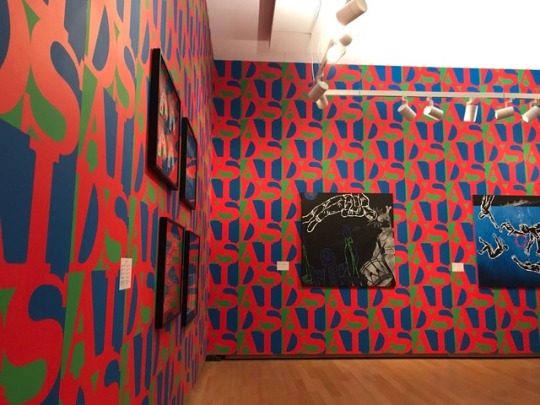

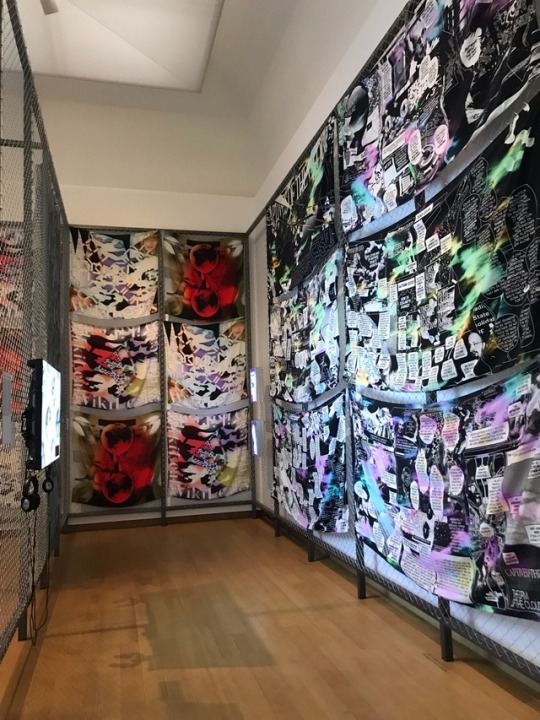
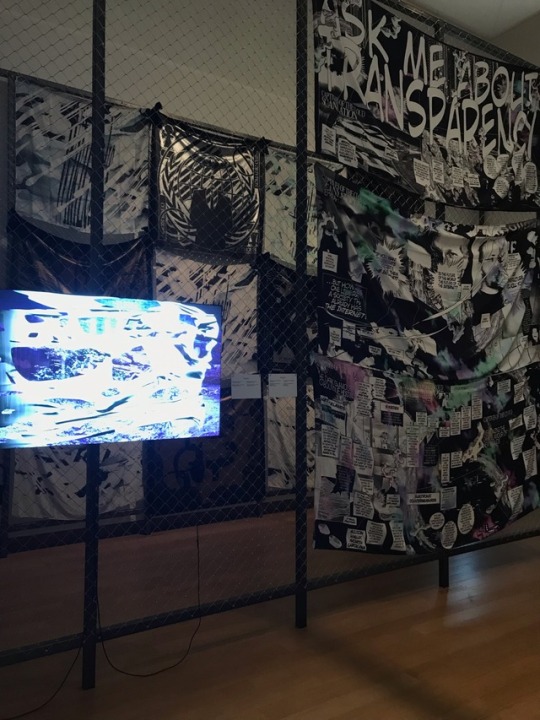
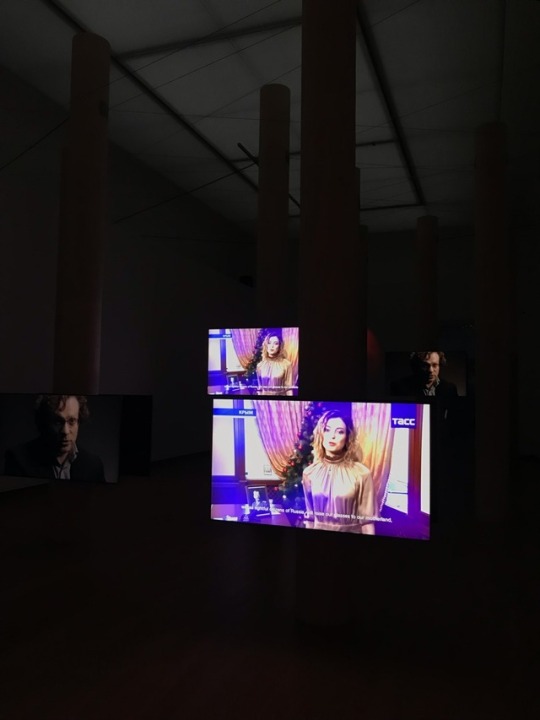
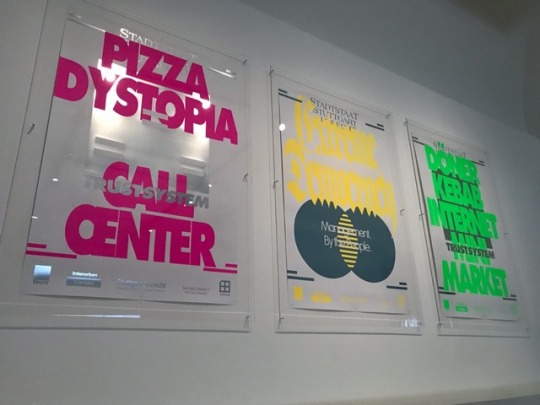
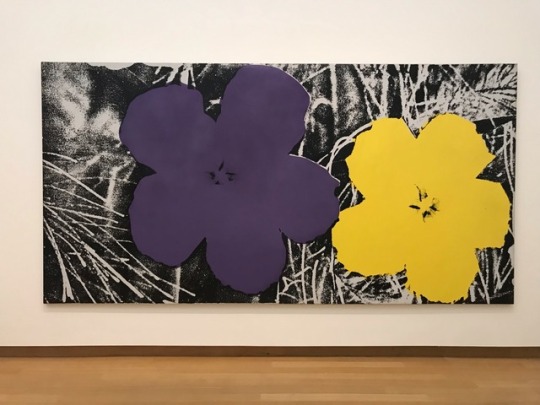

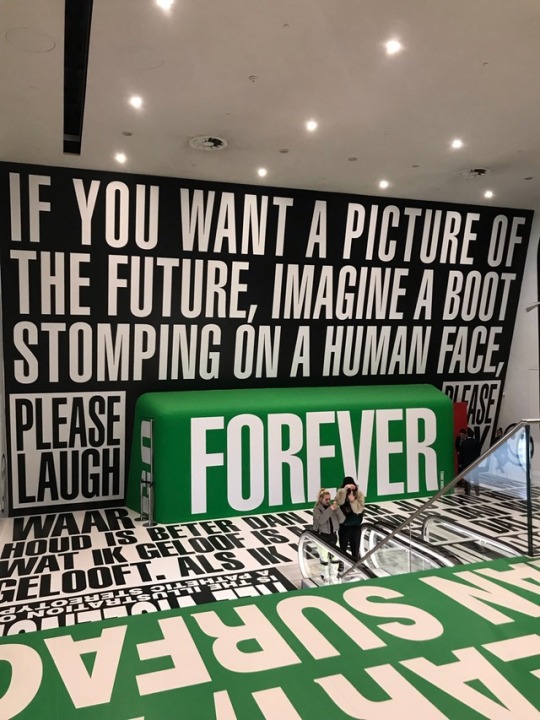
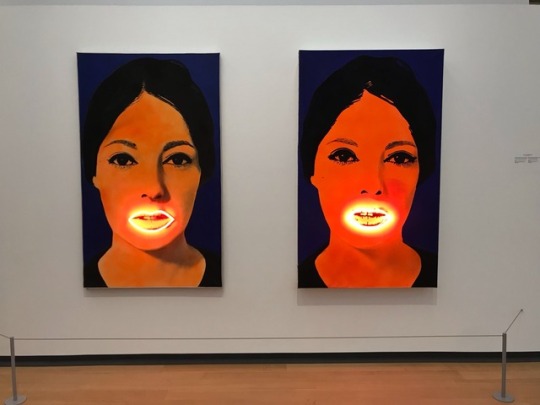
0 notes
Text
Things Don’t Always Go As Planned
This past February the “Beast From The East“ descended upon Amsterdam just as we arrived to visit. It was cold. Really cold. In fact, it was miserable walking around the city and bikes seemed like it would only make it worse as we would have to cut through the cold wind.
So what to do Amsterdam when it is colder
than a Polar Bear’s toenails outside?
Head inside. Thankfully, my daughter loves art and plans on studying art history, so off we went to the Van Gough Museum. The next day there was a discussion of going to the Rijksmuseum. I opted out. No offense to anyone, but Dutch Masters aren’t my favorite period of art and I’ve seen it. I said I’d find something else to do. But my mind wandered to the modern building we had seen the day before. Hidden in the shadow of the Rijksmuseum and the Van Gough museum is the Stedeljik.
The Stedelijk is the Goldilocks of museums. It is not too small, not too big. It is just the right size.
The collection is primarily modern art, but it also houses quite a few paintings from other artistic genres. For a medium sized museum we all agreed that it is packed full of great art.
The Stedelijk Building
As I mentioned, the Stedelijk can be found tucked behind the Van Gogh Museum and the Rijksmuseums on Museumplein. The Stedelijk is a contemporary art museum and thus, it is fitting that the building itself, a modern glass and steel structure, is a stunning piece of architectural art on its own.
The Stedelijk Museum Amsterdam. Photo credit: http://www.lensvelt.nl
The Stedelijk Museum Amsterdam. Photo credit: ArchDaily by Jannes Linders
The Original Building
The original collection was made up of art and antiques that were donated to the city of Amsterdam by Sophia Augusta Lopez Suasso de Bruyn, a wealthy widow who wished to have a museum opened in her home and in her name upon her passing. Indeed, the Stedelijk was originally called The Suasso Museum and was housed in her home.
Eventually, Madame Suasso’s home was deemed too small and a new building was designed by A.W. Weissman, a local architect. The new museum building designed by Weissman has a neo renaissance façade with several ornate, figurative sculptures. When the new, modern, wing was added many of the flourishes were lost to modernization and renovations. The Stedelijk´s original and main building was constructed between 1891-1895 at Paulus Potterstraat, at the short walking distance from the Rijksmuseum.
The New Building – aka The Bathtub
Stedelijk Museum. Photo John Lewis Marshall
A more modern and more functional building was opened in 2012 after almost a decade of renovations. The modern addition, designed by Dutch architects Adriaan Willem Weissman and Benthem Crouwel Architect, is a pretty sharp contrast in style to the Weismann building. After the unveiling of the new addition, many locals thought that the modern aesthetic clashed with the old Stedelijk building, The Concertgebouw, the Van Gogh Museum and the Rijksmuseum. Essentially, they didn’t think the modern style went well with the other buildings in the neighborhood. Locals took to calling the new addition “the bathtub.” In my opinion, the new building fits its purpose of showcasing contemporary art and, an added bonus, it offers amazing views of the Museumplein. I sat and people watched through those big beautiful windows for 40 minutes as I sipped my coffee, warm and toasty away from the cold. It was lovely.
Overlooking Museumplein
The museum’s purpose has changed many times over the years – going from a private collections of art, collectibles, furniture, and antiques to medical instruments and finally resting on contemporary art and design.
Along with the masters of modern painting genres such as Impressionists, Fauvism, Cubism, Expressionism, the Stedelijk also has a unique collection of furniture, and, photography.
The Collection
The collection includes modern and contemporary art and design from the early 20th century up to the 21st century and features famed masters such as Vincent, van Gough, Wassily Kandinski, Marc Chagall, Henri Matisse, Jackson Pollack, Andy Warhol, Willem de Kooning, and Keith Haring.
Highlights From The Collection
The Stedelijk has everything from quirky artists previously unknown to me . . .
Martial Raysse and Elaine Sturtevang, installation view The collection, STEDELIJK BASE. Photo: Gert Jan van Rooij
Personnage Hilare (Portrait de Francis Ponge) by Jean Dubuffet. 1947.
Lady Chatterly’s Horse. Bill Copley. 1960.
Mexican Women in Profile. Erwin de Vries. 1989
to the masters of the modern movement . . .
Composition with Blue, Yellow, Red, Black, and Gray. Piet Mondrian. 1922.
Rosy Fingered Dawn at louise Point. Willem de Kooning. 1963.
Cathedra. Barnett Newman. 1951.
Untitled (Umber Blue). Mark Rothko. 1962.
Improvisation 33 (Orient 1). Wassily Kandinsky. 1913.
North Atlantic Light. Willem de Kooning. 1977.
The Water Bull. Jackson Pollack. 1946.
to the masters:
La femme enceinte (Maternité). Marc Chagall. 1913.
La Montagne Sainte-Victoire. Paul Cézanne. 1888.
Odalisque. Henri Matisse. 1921.
Femme nue devant le Jardin. Pablo Picasso. 1956
Le Violoniste. Marc Chagall. 1912 -1913.
Kitchen Gardens on Monmartre. Vincent van Gough. 1887.
Two Surroundings. Wassily Kandinsky. 1934
Femme assise au chapeau en forme de poisson. Pablo Picasso. 1942.
Femme dans un paysage – Anna Boch 1890. Legend has it that Anna Boch was the only person to have purchased apainting from Vincent van Gough while he was alive. This has been dabted but it is the reason that her work hangs next to van Goughs work at The Stedelijk.
La Berceuse (Woman Rocking a Cradle. Vincent van Gough. 1889.
And, The Keith Haring Velum
American artist, Keith Haring, began his career in 1980, drawing graffiti in the New York subway. During a brief, but intense, career that spanned the 1980s, Haring’s work was featured in over 100 solo and group exhibitions. In 1986 alone, he was the subject of more than 40 newspaper and magazine articles.
In 1986, at the heigh of his career, Haring agreed to create a special piece for The Stedelijk. From The Stedelijk website: “The American artist painted the canopy, which filters daylight into the grand hallway, especially for his solo exhibition at the Stedelijk in 1986. For this show, Haring didn’t simply want to present artwork he’d already made – he insisted on making new work. Laying out the velum (which measures almost 40 x 66 feet, 12 x 20 meter) on the floor of one of the museum galleries, he painted it in just one day, using spray paint. Haring turned the event into an energy-fueled performance: while photographers and journalists looked on, he painted rapidly and rhythmically, moving over the canopy, hip-hop playing in the background. He filled the canopy with dancing, waving figures, crawling babies and squirming animals. Known as the ‘Keith Haring velum’, the painting was stretched below the monumental glass cupola above the historic staircase. The painting was an instant hit. Now, more than thirty years later and restored, the velum is back for everyone to enjoy.”
The photos do not do the velum justice. It was beautiful in person with the light slipping through and contrasting the parts untouched by sun.
Keith Haring. Stedelijk Museum Amsterdam
Keith Haring. Stedelijk Museum Amsterdam
Keith Haring. Stedelijk Museum Amsterdam
The Keith Haring velum. The Stedelijk Museum, Amsterdam.
The Keith Haring velum. The Stedelijk Museum, Amsterdam.
Practicalities
Hours:
Monday – Thursday and Saturday and Sunday: 10:00 – 18:00
Friday: 10:00 – 22:00
Tickets:
You can buy your tickets in person or online at Stedelijk museum tickets.
Adults: €17,50 Children under 18: free Students (29 yrs or younger),
Cultural Youth pass (CJP) €9
20% discount with Amsterdam City Pass
Address:
Stedelijk Museum
Museumplein 10
1071 DJ Amsterdam
The Netherlands
If you get a chance to visit the Stedelijk, I hope that you enjoy it as much as we did. Maybe because we had not planned on going, in fact none of us had even heard of it, it turned out to be one of those serendipitous moments where things did not go as planned, but we ended up with a lovely surprise.
The Stedelijk – The Goldilocks of Museums Things Don't Always Go As Planned This past February the "Beast From The East" descended upon Amsterdam just as we arrived to visit.
#abroad#Americans#Amsterdam#art#canals#contemporary art#european travel#ex-pat#Holland#modern art#Stedelijk Museum#The Netherlands
0 notes
Text
Stedelijk Museum Amsterdam en zijn collectie
Op dinsdag 21 maart 2017 zijn wij naar het Stedelijk Museum in Amsterdam gegaan. Het Stedelijk heeft een vaste collectie die bestaat uit bijna 90.000 objecten. Van die 90.000 objecten zijn er ongeveer 2.500 daadwerkelijk te zien van 1870 tot nu.
Een korte samenvatting van de geschiedenis van het museum: het Stedelijk Museum Amsterdam is opgericht in 1874. In 1895 bevond het zich aan de Paulus Potterstraat, maar sinds 2012 is het gelegen op het Museumplein in Amsterdam-Zuid. Hier zijn ook het Rijksmuseum en het Van Gogh Museum gevestigd. Het oorspronkelijke museum was een bakstenen, neorenaissancegebouw en werd ontworpen door architect Adriaan Willem Weissman. Van 2004 tot 2012 was het gesloten, vanwege de heropening. De nieuwe vleugel is ontworpen door Benthem Crouwel Architekten.
Dit Nederlandse museum wordt internationaal beschouwd als een van de meest invloedrijke musea voor twintigste-eeuwse kunst. Het betreft een verzamelgebied van zowel hedendaagse kunst als fotografie en design. (bron: https://nl.wikipedia.org/wiki/Stedelijk_Museum_Amsterdam)
Wij vonden het erg opvallend dat er van de 90.000 objecten maar 2.500 in het museum te zien zijn. Daarom vroegen wij ons af wat er gebeurd met de andere kunstwerken. Een vaak voorkomend probleem is dat mensen kunst kopen als financieel onderpand. Dit is ook terug te zien in de documentaire die wij in het laatste hoorcollege te zien kregen: The Next Big Thing.
In deze documentaire is te zien dat ondanks de wereldwijde financiële crisis, de prijzen voor hedendaagse kunst blijven stijgen. Je ziet veilingen bij Christie’s en Sotheby’s die steeds weer recorden breken. ‘Het aantal superrijken neemt explosief toe en een groot aantal van hen heeft zich op kunst gestort. Verzamelaars zijn hierdoor steeds machtiger geworden en bepalen meer dan wie ook de smaak van onze tijd.’ Wat zegt dit over de toekomst van de kunst? Dit is een interessant vraagstuk. Het lijkt niet meer op de kunsthandel die we van eerder kennen, het heeft nu de karakteristieken van Wall Street met alle speculaties en marktmanipulaties. (bron: https://www.npo.nl/het-uur-van-de-wolf/27-03-2014/NPS_1236101)
In de documentaire is ook te zien dat een kunstenaar zijn werk verkocht aan iemand die zijn kunst tentoon zou stellen voor publiek, tenminste, dit dacht hij. Dit werk werd echter doorverkocht aan iemand die het als financieel onderpand gebruikt. Kunst blijft namelijk zijn waarde houden. Hier kan je als kunstenaar weinig aan doen.
Om de kunstcollectie van het Stedelijk Museum Amsterdam optimaal te gebruiken, dat zo veel mogelijk mensen het zien, lenen ze collecties uit. Een dergelijke uitleenaanvraag is een lang proces. Hier kan je zo zes maanden mee bezig zijn. Ook is dit zeker niet zonder kosten. Doordat er in het Stedelijk Museum een bibliotheek is, waar alle 90.000 objecten terug te vinden zijn, krijgen ze wel de erkenning die ze verdienen.
0 notes